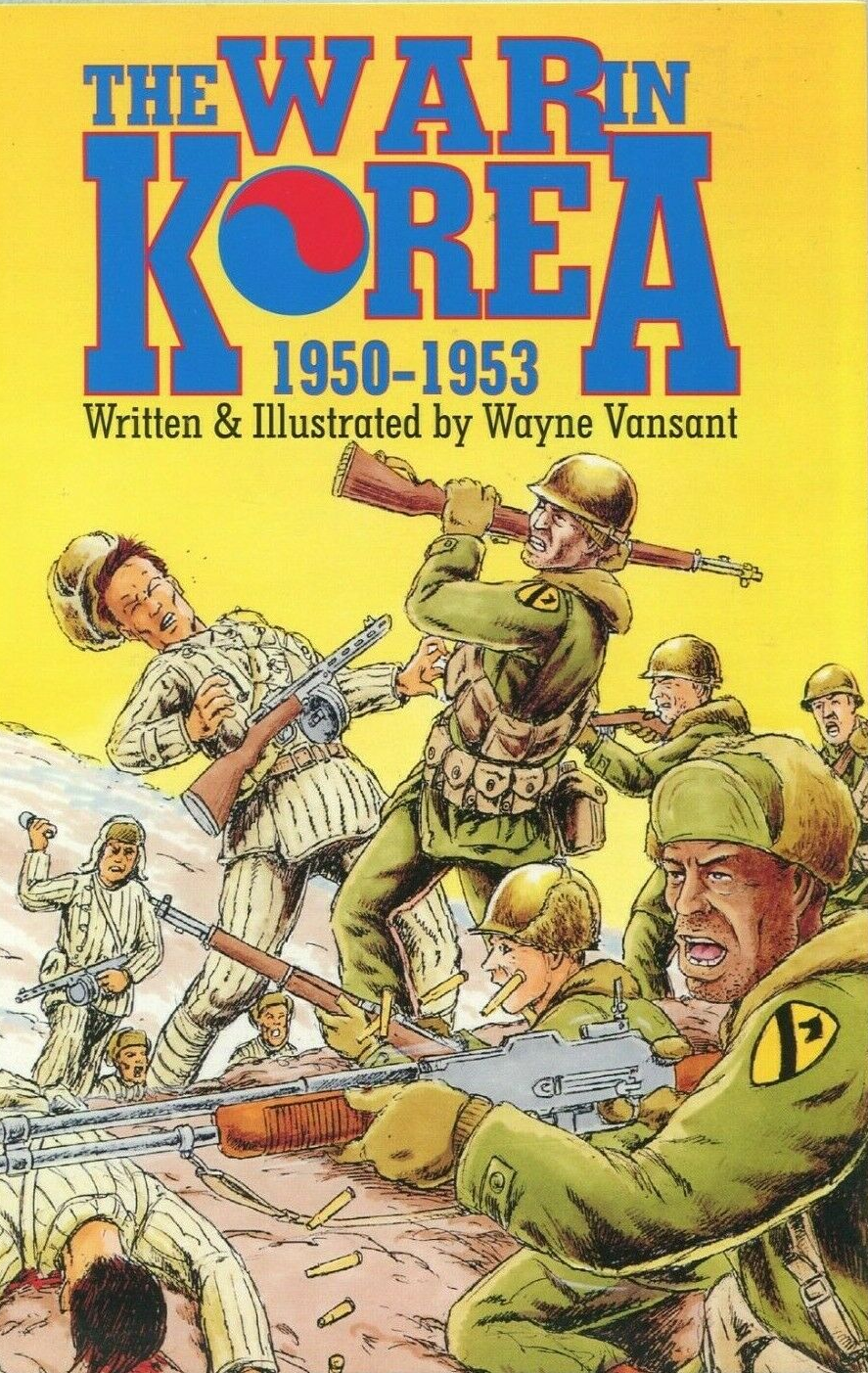
- Available Rights:
- Print – worldwide
- Digital – worldwide
- 97 pages
- Color
- Recommended for readers 12 to adult
The War In Korea: 1950 – 1953 is one of graphic novel author Wayne Vansant’s best works. Out of print for years, this visually detailed and exhaustively researched graphic history of the Korean War has been highly praised for it’s accuracy, including depictions of atrocities committed by both sides.
In his 2021 book Korean War Comic Books, teacher, cartoonist, and educational comics pioneer Leonard Rifas examined The War In Korea:
Alerted to the upcoming 50th anniversary of the Korean War, Wayne Vansant, a comic book creator specializing in war stories, wrote and drew an extraordinary 96-page, square bound history of that conflict, The War in Korea: 1950-1953, which was copyrighted in 2001. His pages differ from most war comics in having no dialogue balloons. Instead of dialogue, they use typeset captions to describe the war’s history in close detail.
Although this comic introduces the Korean War as an inevitable “showdown between the ideologies of the Democratic West and the Communist Bloc”, it pays attention to strictly military matters rather than ideologies. This comic seems to use as many statistics and as many names of the individual commanders, fighting units, battles, and war heroes as the whole Korean War comic book genre added together. Almost every panel shows military violence, soldiers on a battlefield, military leaders or military equipment.
On page 13, Vansant’s comic takes a break from reporting on battles to describe some of the better-known atrocities of that war:
When the North Koreans arrived in Taejon, they did as they had done in other South Korean villages. They rounded up the mayors and school teachers. The doctors and landowners. Anyone in a position of authority.
These people were led to a trench dug in the earth, then… [shot dead, as the picture shows]. The ROK and Americans were not completely innocent either. Under a railroad bridge near the town of No Gun Ri an estimated 400 civilians were machine-gunned by men of the 1st Cavalry Division who believed there were NKPA guerillas among them.
Vansant’s comic appeared years before South Korea’s official Truth and Reconciliation Commission announced that most of those killed at Taejon had been political prisoners killed by South Koreans.
Sample pages:
- The War In Korea page 44
- The War In Korea page 45
- The War In Korea page 46
- The War In Korea page 47
- The War In Korea page 68
- The War In Korea page 69






